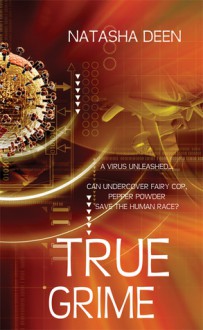
bookshelves: fraudio, published-2011, true-grime, serial-killer, nazi-related, autumn-2011, france, nonfiction, wwii, war, gorefest, history, medical-eew
Read from October 16 to 20, 2011
** spoiler alert ** 
RELEVANT QUOTE - “I am constantly amazed by man's inhumanity to man.”
― Primo Levi
From wiki - On 11 March 1944, neighbors of a house owned by Marcel André Henri Félix Petiot at 21 rue Le Sueur in Paris, complained to police of a foul stench in the area and of large amounts of smoke billowing from a chimney of the house. Fearing a chimney fire, the police summoned firemen, who entered the house and found a roaring fire in a coal stove in the basement. In the fire, and scattered in the basement, were human remains.
General Information
===============
Narrator.......................Paul Michael
Abr/Unabr....................Unabridged
Genre...........................True story of a brutal serial killer
Total Runtime...............13 Hours 54 Mins
BLURBS: Death in the City of Light is the gripping, true story of a brutal serial killer who unleashed his own reign of terror in Nazi-Occupied Paris. As decapitated heads and dismembered body parts surfaced in the Seine, Commissaire Georges-Victor Massu, head of the Brigade Criminelle, was tasked with tracking down the elusive murderer in a twilight world of Gestapo, gangsters, resistance fighters, pimps, prostitutes, spies, and other shadowy figures of the Parisian underworld.
The main suspect was Dr. Marcel Petiot, a handsome, charming physician with remarkable charisma. He was the “People’s Doctor,” known for his many acts of kindness and generosity, not least in providing free medical care for the poor. Petiot, however, would soon be charged with twenty-seven murders, though authorities suspected the total was considerably higher, perhaps even as many as 150.
Who was being slaughtered, and why? Was Petiot a sexual sadist, as the press suggested, killing for thrills? Was he allied with the Gestapo, or, on the contrary, the French Resistance? Or did he work for no one other than himself? Trying to solve the many mysteries of the case, Massu would unravel a plot of unspeakable deviousness.
When Petiot was finally arrested, the French police hoped for answers.
But the trial soon became a circus. Attempting to try all twenty-seven cases at once, the prosecution stumbled in its marathon cross-examinations, and Petiot, enjoying the spotlight, responded with astonishing ease. His attorney, René Floriot, a rising star in the world of criminal defense, also effectively, if aggressively, countered the charges. Soon, despite a team of prosecuting attorneys, dozens of witnesses, and over one ton of evidence, Petiot’s brilliance and wit threatened to win the day.
Drawing extensively on many new sources, including the massive, classified French police file on Dr. Petiot, Death in the City of Light is a brilliant evocation of Nazi-Occupied Paris and a harrowing exploration of murder, betrayal, and evil of staggering proportions.
This book should have come face to face with an active editor to whittle it down to ten hours max. Georges Simenon, Sartre, Camus, Fleming, Picasso and de Beauvoir's lives overlap with this grisly tale.

RELEVANT QUOTE - “I am constantly amazed by man's inhumanity to man.”
― Primo Levi
From wiki - On 11 March 1944, neighbors of a house owned by Marcel André Henri Félix Petiot at 21 rue Le Sueur in Paris, complained to police of a foul stench in the area and of large amounts of smoke billowing from a chimney of the house. Fearing a chimney fire, the police summoned firemen, who entered the house and found a roaring fire in a coal stove in the basement. In the fire, and scattered in the basement, were human remains.
General Information
===============
Narrator.......................Paul Michael
Abr/Unabr....................Unabridged
Genre...........................True story of a brutal serial killer
Total Runtime...............13 Hours 54 Mins
BLURBS: Death in the City of Light is the gripping, true story of a brutal serial killer who unleashed his own reign of terror in Nazi-Occupied Paris. As decapitated heads and dismembered body parts surfaced in the Seine, Commissaire Georges-Victor Massu, head of the Brigade Criminelle, was tasked with tracking down the elusive murderer in a twilight world of Gestapo, gangsters, resistance fighters, pimps, prostitutes, spies, and other shadowy figures of the Parisian underworld.
The main suspect was Dr. Marcel Petiot, a handsome, charming physician with remarkable charisma. He was the “People’s Doctor,” known for his many acts of kindness and generosity, not least in providing free medical care for the poor. Petiot, however, would soon be charged with twenty-seven murders, though authorities suspected the total was considerably higher, perhaps even as many as 150.
Who was being slaughtered, and why? Was Petiot a sexual sadist, as the press suggested, killing for thrills? Was he allied with the Gestapo, or, on the contrary, the French Resistance? Or did he work for no one other than himself? Trying to solve the many mysteries of the case, Massu would unravel a plot of unspeakable deviousness.
When Petiot was finally arrested, the French police hoped for answers.
But the trial soon became a circus. Attempting to try all twenty-seven cases at once, the prosecution stumbled in its marathon cross-examinations, and Petiot, enjoying the spotlight, responded with astonishing ease. His attorney, René Floriot, a rising star in the world of criminal defense, also effectively, if aggressively, countered the charges. Soon, despite a team of prosecuting attorneys, dozens of witnesses, and over one ton of evidence, Petiot’s brilliance and wit threatened to win the day.
Drawing extensively on many new sources, including the massive, classified French police file on Dr. Petiot, Death in the City of Light is a brilliant evocation of Nazi-Occupied Paris and a harrowing exploration of murder, betrayal, and evil of staggering proportions.
This book should have come face to face with an active editor to whittle it down to ten hours max. Georges Simenon, Sartre, Camus, Fleming, Picasso and de Beauvoir's lives overlap with this grisly tale.

 Log in with Facebook
Log in with Facebook 







